For your website to rank on Google, or on any other search engine, it needs to first be crawled by that search engine. But how you see your website differs greatly from how Google sees it. That’s why it’s important to understand what elements search engines look at if you’d like to have a website that appears in search results.
So, what does Google see when it crawls your website? When a search engine crawls your website, it reads the on-page content and links, but in the form of HTML code. Additionally, it looks at the title and header tags and meta description of your page. Google also sees images by reading their alt text and looks at schema markups to understand what the website offers.
Want to find out more about how Google sees each of those elements? Read on as we go into more detail further down this blog.
No matter what theme or CRM your website uses, when you open it, you should be able to see key elements such as your website’s URL, your logo, the navigation bar and the content on your pages – the title, the text content, the images and other media to name a few.
And interestingly enough, Google is able to see that same information! Except, it sees it slightly differently.

Regardless of how many pages you’ve got on your website, Google can inspect them all with the help of Googlebot – Google’s very own web crawler. Googlebot comes across billions of pages and sites every day, but for it to see your website, especially if it has a lot of pages, it’s recommended you have a sitemap.
When Googlebot arrives on your website, the first thing it will read is your sitemap – a robots.txt file that contains all the pages of your website that you want Google to crawl and additional information about other files on your website.
Think of a sitemap as a guide; you show Google which pages and files on your website are important so that once Googlebot arrives on your website, it knows where to go next.

Wildcat Top Tip: if your website is on WordPress, you can use the Yoast plugin, which will automatically generate it for you. Then, you can easily submit it to Google Search Console. Need help with this? Read more about building and submitting sitemaps on Google Search Central.
Once Googlebot discovers your sitemap, it will move on to read your pages.
Google will read every single word that’s on your page – from the page titles in the navigation menu, through the page content, to the text in the footer. However, while you can see the different fonts and text sizes, Google will see it all in code.
Alongside paragraphs with text, your pages are likely to have a title and subheadings to help page visitors navigate easier through the page’s content. Those subheadings are likely to be tagged as header tags in the page code.
Google pays extra attention to the header tags. To differentiate them from the paragraph text on the page, they will be marked differently in the HTML code.
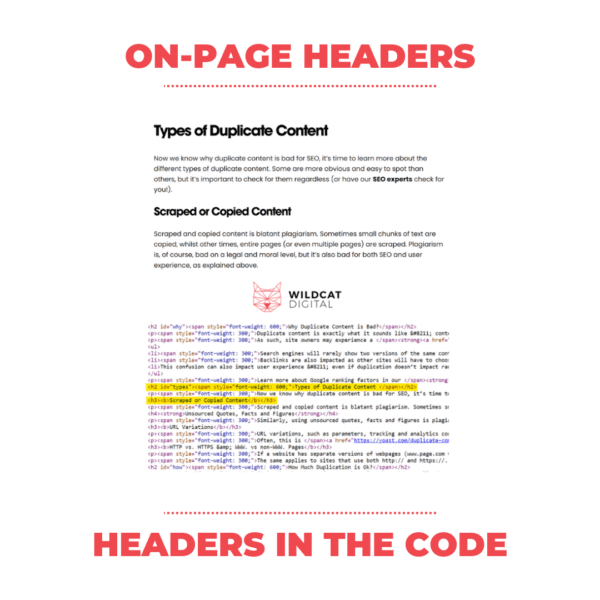
Alt text is what helps Google understand what’s featured in an image. As Googlebot can’t see what an image looks like, it reads its Alt text, which should describe what’s included in it.
When it comes to videos, you can help Google index them by providing metadata about each video, including its title, description, length, thumbnail image and upload date.
Googlebot crawls links in the same way it crawls content: it sees them in the HTML code. However, for Google to crawl your links, they need to have a <a> tag and an ‘href’ attribute. If they don’t follow this format, Googlebot wouldn’t be able to follow them.
Yes, there are certain page elements that you wouldn’t be able to see on-page without referring to the page code or using a tool to inspect your page. These include:
These elements, alongside title tags, meta description, user engagement and page mobile friendliness are just a few of the many elements Google can see, unlike us, and considers when deciding where to rank your website.
You can get Google to crawl your website more often by removing low-quality pages from your website, especially if you have a large website. Google can crawl only so many pages at a time, so removing ones that don’t bring value will work in favour of your quality pages.
In addition, adding fresh content regularly, building a good internal links structure and reducing the number of technical errors can also help Google crawl your website more often.
This would depend on the size of your website and how often you update it, but in general, Google would crawl your website every 2-3 days to 2-3 weeks. Something to bear in mind though is that Googlebot crawls URLs with a different frequency. For example, it might crawl some URLs every 5-6 days, while others – every 5-6 months.
Use Google Search Console’s inspection tool which shows on which date a page was last crawled and indexed. If you find that a page on your website hasn’t been indexed, which is often the case for newly-created pages, you can request indexing manually.
You’re in the right place. We’ve helped a wide range of different businesses punch above their weight online with tailored SEO services. Contact us today for a free consultation.

Founder
Our founder, Will Hitchmough, worked at a number of high profile Sheffield Digital Agencies before founding Wildcat Digital in 2018. He brings an extensive knowledge of all things related to SEO, PPC and Paid Social, as well as an expert knowledge of digital strategy.
Digital Marketing can be a minefield for many businesses, with many agencies ready to take your money without knowing how to deliver results. I founded Wildcat Digital to deliver digital success to businesses with smaller budgets in a transparent way.

Head of Growth
Rich joined us in May 2024 to head up our growth team. With years of experience helping other agencies to grow, Rich joins us at an exciting time as Wildcat is working on a five-year plan to become one of the biggest agencies in the UK.
Outside of work, Rich is a father to three children, which keeps him very busy! He’s also recently started running again to keep fit and loves a bit of DIY.
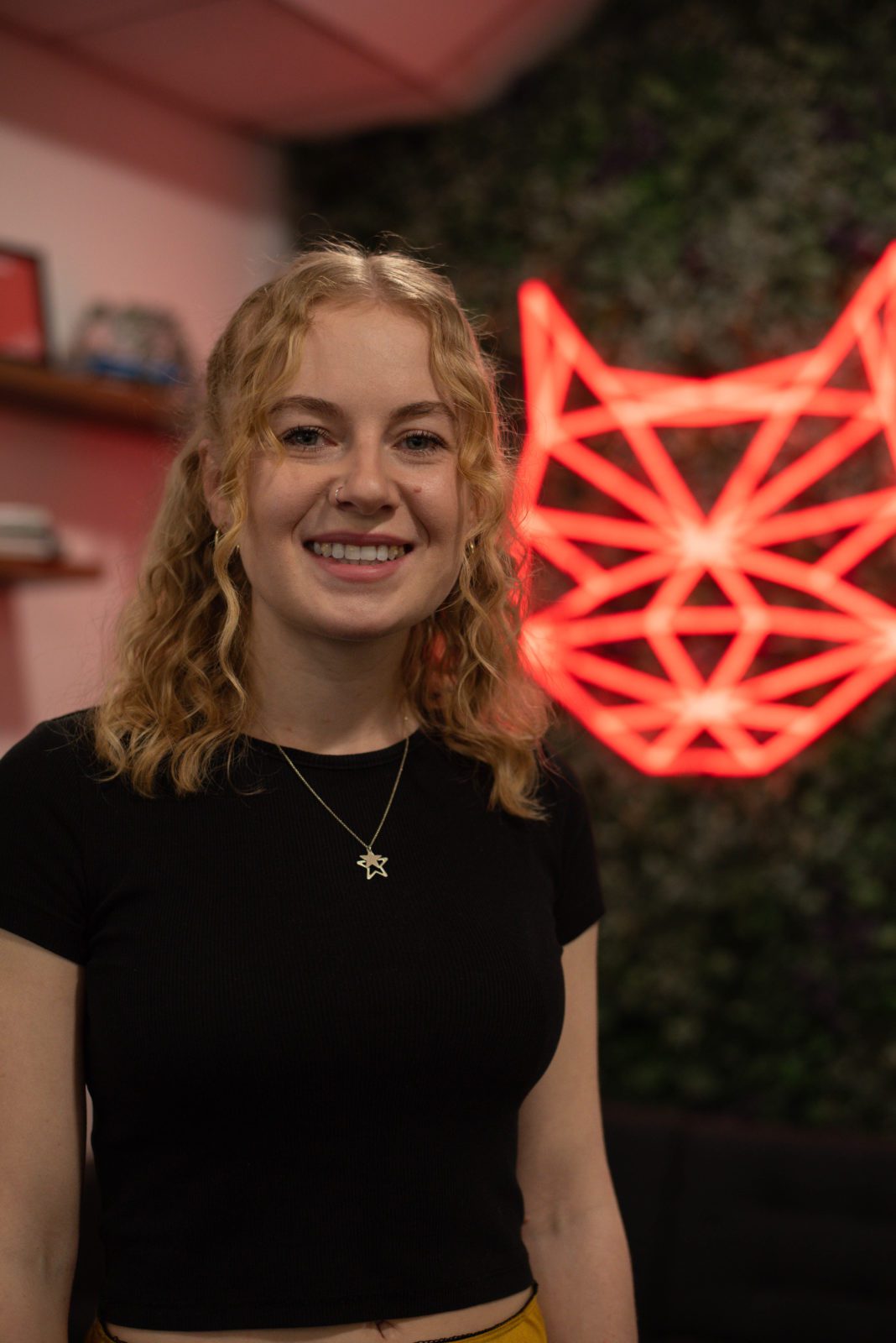
Head of Digital
Sarah joined Wildcat in January 2025, bringing over seven years of SEO expertise to the team. With a background in Fashion Communication and Promotion, she has worked both in-house and at agencies, covering a range of digital marketing specialisms before focusing on SEO.
Passionate about all things search, Sarah thrives on helping brands grow their online presence.
Outside of work, she enjoys walking her dog, running, and shopping for vintage clothing.
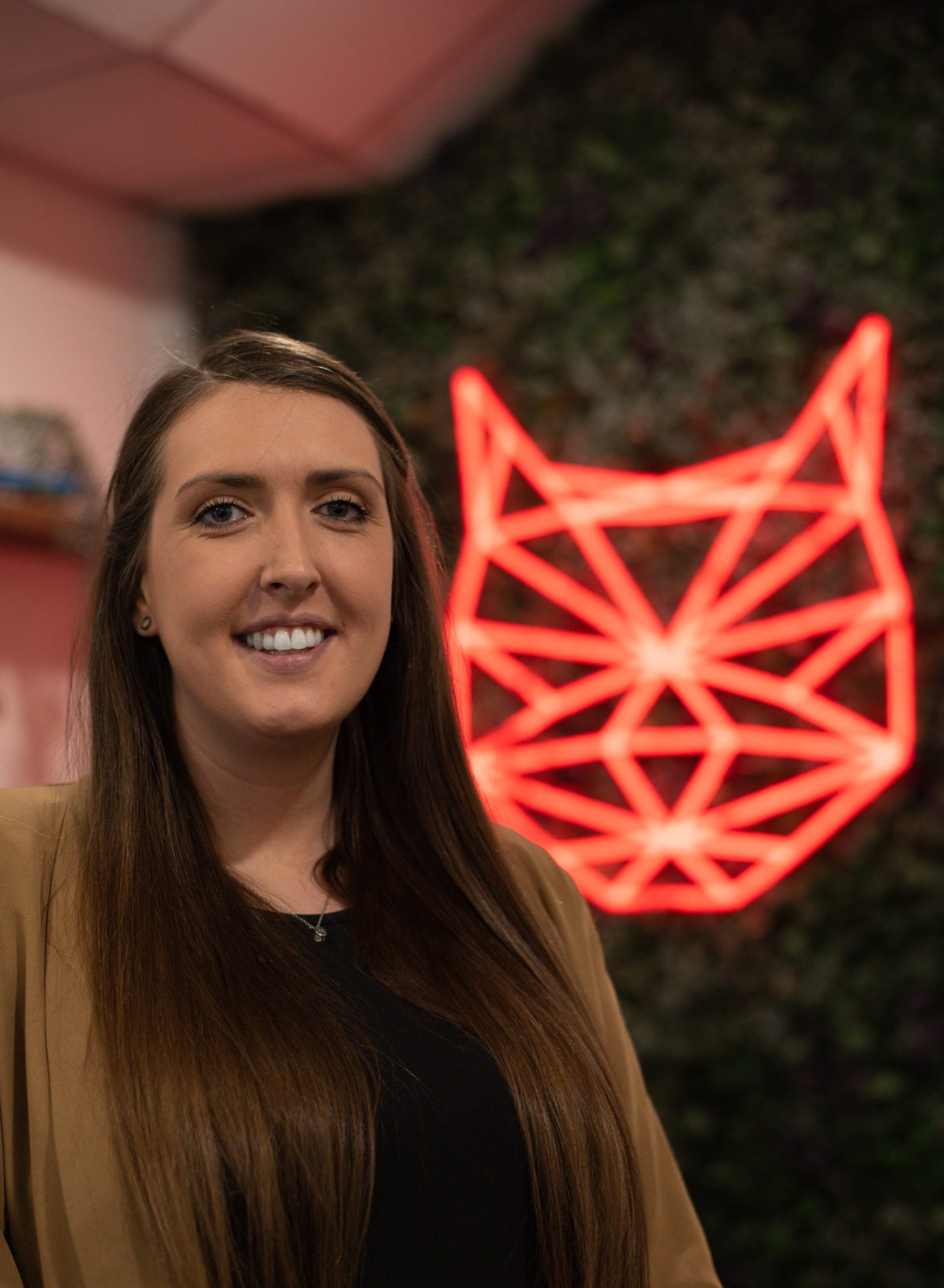
Office Manager
Amelia joined Wildcat Digital in January 2025, bringing extensive experience in HR, Health & Safety, Facilities Management and IT Support. Previously an Operations Manager at The University of Sheffield, she has a strong background in creating efficient and well-organized work environments.
Specialising in HR, Health & Safety, and Facilities Management, Amelia ensures the Wildcat Digital team has the resources and support needed to thrive. Whether managing office operations, maintaining compliance, or fostering a positive workplace culture, she keeps everything running smoothly.
Outside of work, Amelia loves trying new things, traveling, camping, and walking. She also enjoys socialising and exploring new places with friends and family. Her adventurous spirit and proactive approach make her a valued member of the team.

Client Success Coordinator
Siena joined us in 2023 with a background in sales and digital marketing. She leads on client relationships across the company, ensuring that our customers are happy throughout their journey with us, from their initial consultation through to onboarding and beyond.
Outside of work, Siena enjoys travelling and getting stuck into the local culture. She likes to make the most of her experiences and particularly enjoys watching sunrises and sunsets from beautiful locations around the world.

SEO Account Director
Paul has a strong background in SEO, having previously founded and ran a successful eCommerce business, as well as running a personal blog that achieves an average of 17K users per month. Paul’s knowledge of SEO is extensive, with a strong emphasis on client handling and technical SEO.
Outside of work, Paul enjoys spending time with his family and staying active with weight lifting and combat sports.

Team Lead & Technical SEO Account Manager
With a degree in Computer Science and SEO experience dating back to 2017, Dariusz has a wide range of SEO skills and knowledge. His specialist knowledge of Technical SEO has firmly landed him the title of Wildcat’s Technical Wizard, and he has recently taken on the responsibility of Team Leader for the Panthers Team.
In his spare time, Dariusz loves hiking, experimenting and trying new coffees and loves learning new things. He is currently learning more about CRO and AI and how this could benefit our clients.

Team Lead & Senior SEO Account Manager
With a background in sales, Molly is a natural Account Manager, brilliantly handling any issues that come her way. Having joined us as a Digital Marketing Executive, and working part-time through her final year of University, Molly is a shining example of how hard work pays off. She is now an SEO Account Manager with a particular interest in Content and Client Management.
In her spare time, Molly loves to get out in nature, hiking and exploring the Peak District. She also loves cooking and likes to unwind with a bit of yoga.

PPC Team Leader
Libby joined Wildcat in 2021 as our first PPC hire. With a degree in Digital Media Production, a Master’s in Digital Media Management and previous experience in Social Media Management, Libby hit the ground running and has since climbed the ranks to Senior PPC Account Manager and has a particular interest in the eCommerce sector.
Outside of work, Libby likes gaming, and cooking and likes to keep active by lifting weights.

Senior SEO Account Manager
With a degree in Film and TV production, and a varied career history, Jamie made the move to marketing with a Masters degree in Digital Media Management. He has since worked in SEO at Agencies across Sheffield, before joining Wildcat and working his way up to SEO Account Manager. Jamie has a particular interest in backlinks and Digital PR and has recently gained a client a valuable backlink from Forbes!
In his spare time, Jamie is an avid foodie and loves trying new restaurants and cuisines. He also loves to travel and spent a year travelling to Australia after university.

SEO Account Manager
Jasmine joined Wildcat in 2022 with a strong background in SEO and Account Management. At the time, she was finishing up a Level 4 Apprenticeship in Digital Marketing from the Chartered Institute of Marketing, and has since worked her way up to SEO Account Manager. Jasmine excels at content writing and promotion, and particularly enjoys finding creative ways to join the dots on multi-channel campaigns.
In her spare time, Jasmine volunteers at a charity, helping combat loneliness & social isolation experienced by older neighbours. Outside of Wildcat, she owns a catering company, Savery Grazing, creating delicious grazing tables & platters for a range of events. She also loves skiing and exploring the Peak District.

SEO Account Manager
Thea has a wealth of experience in SEO, having previously worked for other Digital Marketing Agencies in Sheffield. She has a particular interest and skills in Technical SEO, but is more than willing to get stuck in and give anything a go.
Outside of work, Thea spends most of her time with her children, but also loves reading, photography and gardening.
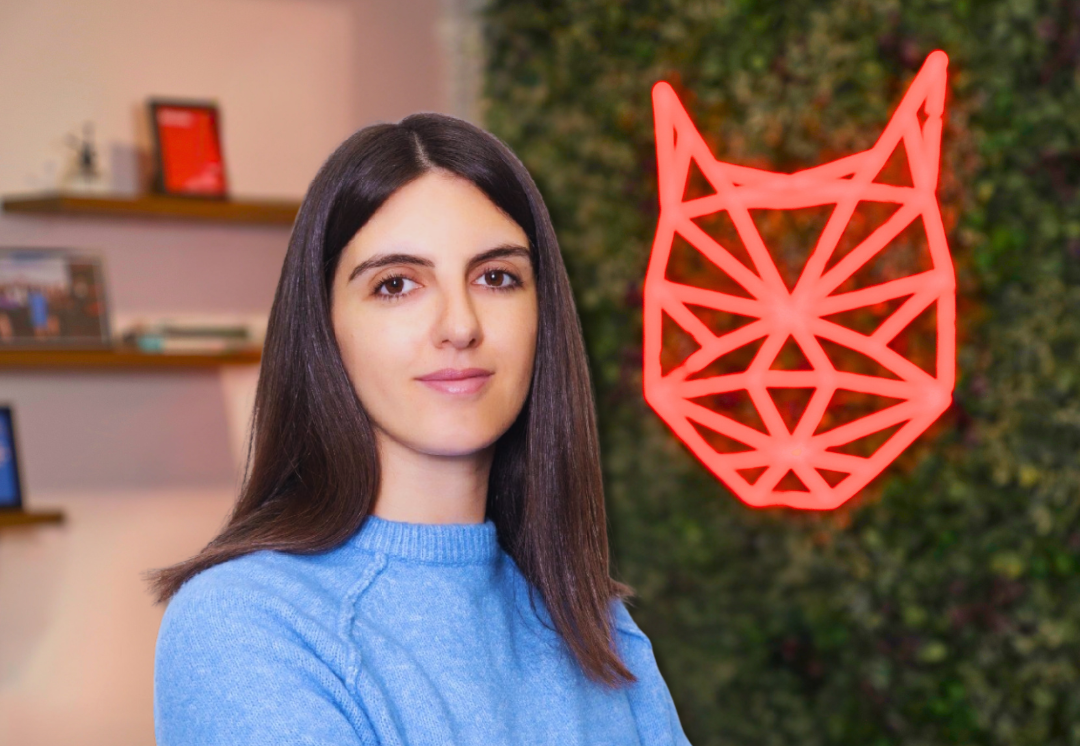
PPC Account Manager
Masilda joined the Wildcat team in October 2024 with over seven years of experience in digital marketing. She specialises in Google Ads, but is also certified in Google Analytics, YouTube Ads, Google Ads for Ecommerce and Apple Search Ads. She has extensive expertise in performance marketing, display advertising, online lead generation and market planning.
In her free time, Masilda likes staying active, cooking, trying new restaurants and exploring new places.

Senior SEO Executive
After spending ten years managing businesses, restaurants, cafes and event spaces across Sheffield, Jon decided to change careers and joined Wildcat as an SEO Executive in 2022. He especially enjoys the client management side of the job, helping them to understand digital marketing and ways in which they can build their business’s presence online.
Outside of work, Jon likes to keep fit with running, badminton and football, and also loves music.

Senior SEO Executive
Andy joined Wildcat in 2023 after starting his digital marketing career in-house for a local Sheffield company. Since joining, he has developed a strong interest in Technical SEO and has strong skills in Account Management.
Outside of work, Andy loves music and plays in a couple of bands. He also enjoys rock climbing, cycling, photography and good food.
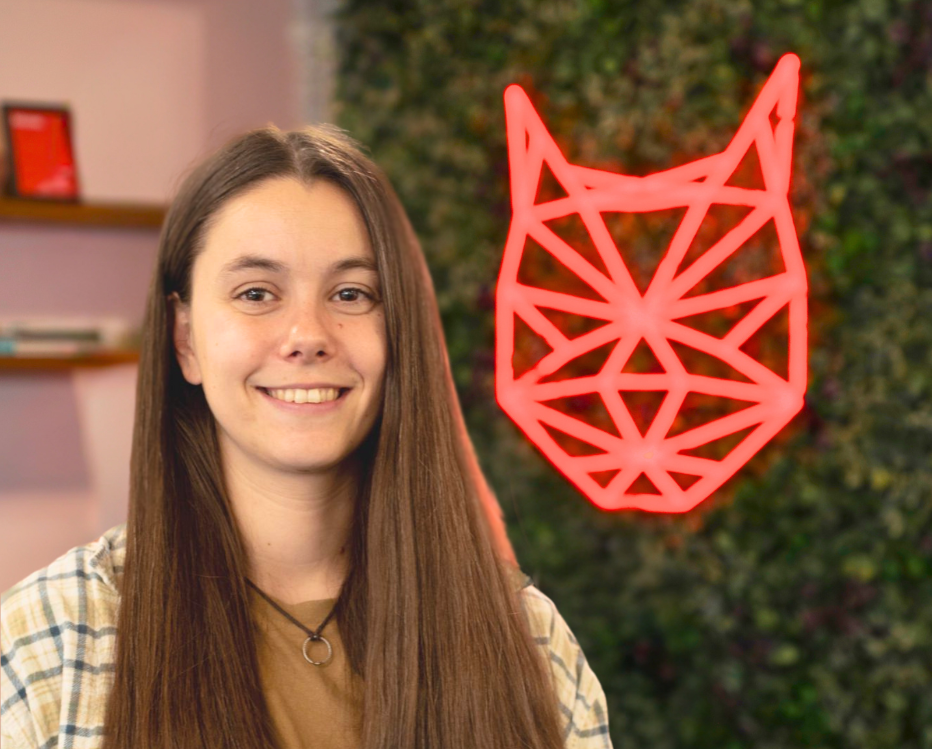
Senior SEO Executive
Kezia joined us in July 2024 after completing a CIM Certificate in Digital Marketing and gaining experience in Content SEO at another Sheffield agency.
In her spare time, Kezia loves to get outdoors, bouldering, hiking and travelling.
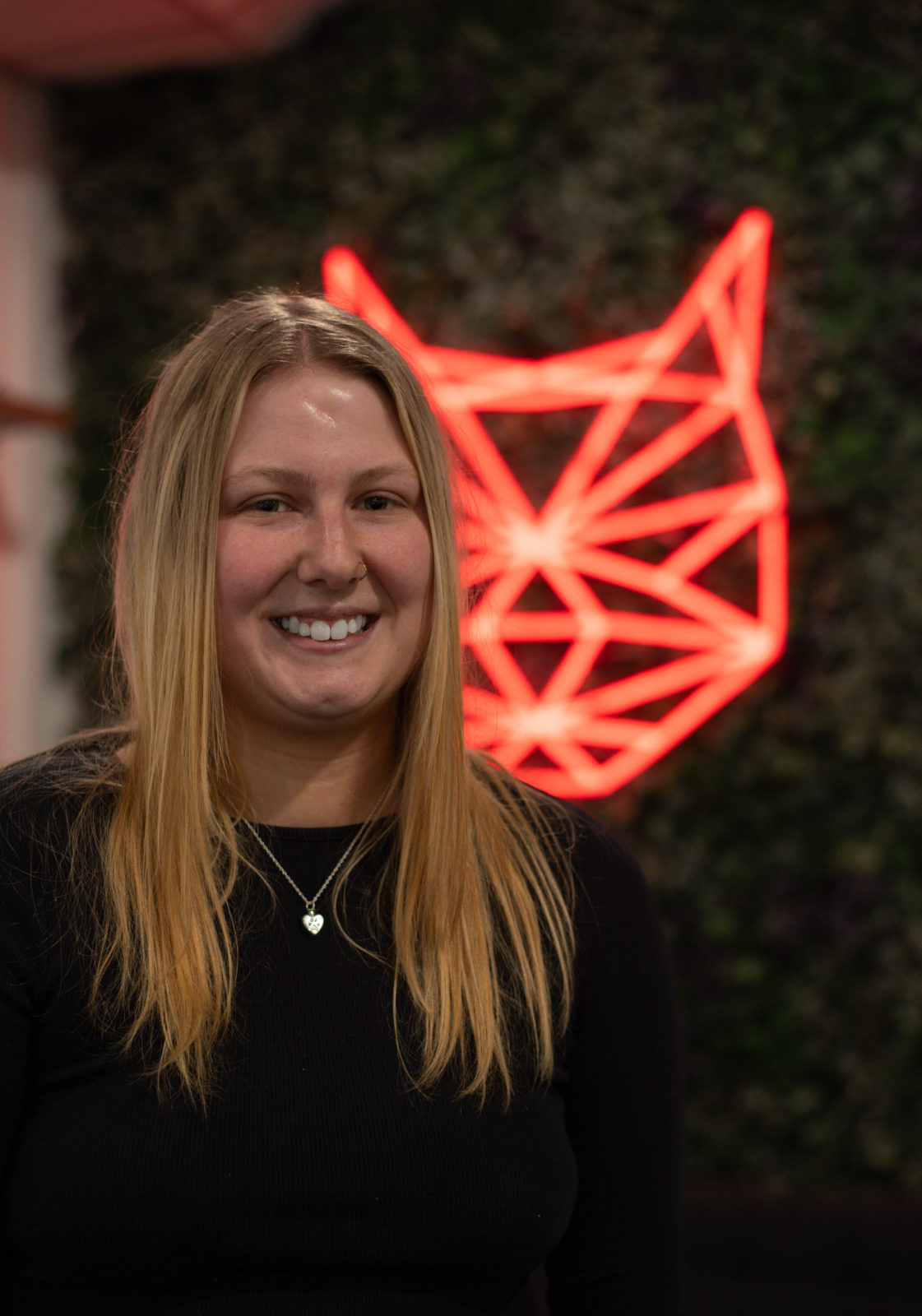
Senior PPC Executive
Alex joined Wildcat Digital in December 2024 as a Senior PPC Executive, bringing a strong background in Paid Media, Paid Social, and Programmatic advertising. With a degree in Business & Marketing and Google Ads certifications, she has the expertise to craft high-performing campaigns that drive results.
Before joining Wildcat Digital, Alex worked at two leading agencies in Leeds, honing her skills across various digital advertising platforms. Her analytical mindset and strategic approach help businesses maximize their online presence and advertising budgets.
Outside of work, Alex enjoys spending time with her dog, Lola, and going on walks with her dog walking group. She’s also a keen footballer and loves playing five-a-side whenever she gets the chance. Her enthusiasm and team spirit make him a great addition to the Wildcat Digital team.

SEO Executive
Amy joined Wildcat in 2024 with a background in journalism, having worked as a News Editor and Editor-in-Chief at The Sheffield Tab. She is naturally interested in Content SEO and research, so will no doubt prove to be a content power-house.
In her spare time, Amy loves watching crime shows, listening to music and hanging out with her dog, Eddie!

June 30, 2025
Welcome to June’s digital marketing news roundup. There’s been major changes in both PPC and SEO, especially regarding AI. We’ll…
May 30, 2025
If you’ve ever tried searching for a local business or service, the chances are you’ve come across a Google map…

May 20, 2025
Welcome to this month’s digital marketing news roundup! As ever the digital landscape continues to transform at lightning speed, so…